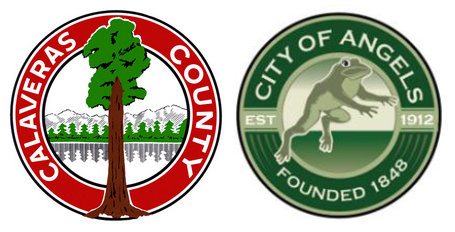San Andreas & Angels Camp, CA…FEMA assistance is not a replacement for insurance but can assist with basic needs to help start your recovery from the severe storms and flooding. This includes assistance to make essential home repairs, find a temporary place to stay, and repair or replace certain household items.

Home Repairs
▪ If your home had storm-related damage and you are uninsured or underinsured, you may be eligible for help from FEMA to restore your homes to a livable condition.
▪ Federal assistance from FEMA provides only the basic needs for a home to be habitable—including toilets, a roof, critical utilities, windows, and doors. Examples of ineligible items may include non-essential cabinets and garage doors.
▪ A home inspection is required to calculate and verify your losses.
▪ Livable homes meet the following conditions:
• The exterior is structurally sound, including the doors, roof, and windows.
• The electricity, gas, heat, plumbing, and sewer and septic systems function properly.
• The interior’s habitable areas are structurally sound, including ceiling and floors.
• The home is capable of being used for its intended purpose.
• There is safe access to and from the home.
Examples
▪ Appliances: FEMA may assist in the replacement or repair of disaster-damaged hot-water heaters and furnaces, essential items that make your home safe, accessible and functional.
▪ Ceiling and Roof Damage: FEMA may assist to repair disaster-caused leaks in a roof that damaged ceilings and threatened electrical components like overhead lights. The cost to fix minor stains from roof leaks is not reimbursable.
▪ Floors: FEMA may assist to repair subfloors in occupied parts of the home that were damaged due to the storms.
▪ Windows: FEMA may assist with disaster-related broken windows, but not blinds and drapes.
▪ FEMA calculations to verify loss vary because every applicant’s situation is different, so awards vary among survivors.
▪ Mitigation is an effort to reduce the loss of life and property damage by lessening the impact of a disaster. FEMA mitigation specialists can answer questions and share home- improvement tips and other proven building methods to prevent or lessen damage from future disasters. The free information geared to do-it-yourselfers and general contractors, and specialists can share techniques for rebuilding hazard-resistant homes.
Examples
▪ Elevate your furnace, electrical systems, and other utilities.
▪ Replace carpet in flood-prone areas with tiles.
▪ Install a sump pump.
▪ Plant trees 10 feet from your sewer lines.
Somewhere to Stay
▪ Homeowners or renters may receive temporary financial help to rent a place to live if a home is unlivable because of the storms, and a survivor has no insurance coverage for temporary housing.
Other Kinds of Help
▪ Under FEMA’s Other Needs Assistance program, financial assistance is available for necessary expenses and serious needs directly caused by the disaster, including:
▪ Child-care expenses
▪ Medical and dental expenses
▪ Funeral and burial expenses
▪ Damage to essential household items:
• Room furnishings
• Appliances
• Specialized tools and equipment required for a job
• Necessary educational materials like computers, schoolbooks, and supplies
▪ Fuel for the primary heat source
▪ Clean-up items like wet/dry vacuums and dehumidifiers
▪ Damage to an essential vehicle
▪ Moving and storage expenses caused by the disaster
To apply call 1-800-621-FEMA (3362) or file online at http://disasterassistance.gov. Additional information and details on the location of disaster recovery centers is available by calling the SBA Customer Service Center at (800) 659-2955.
###


